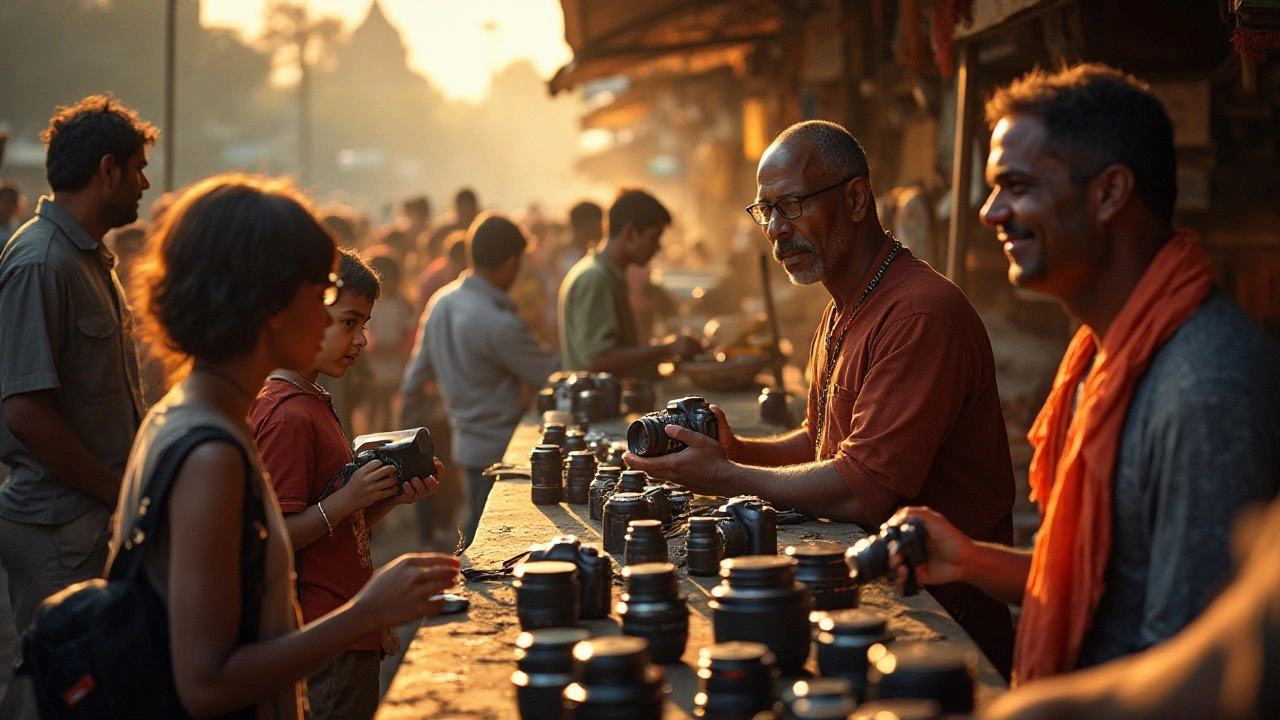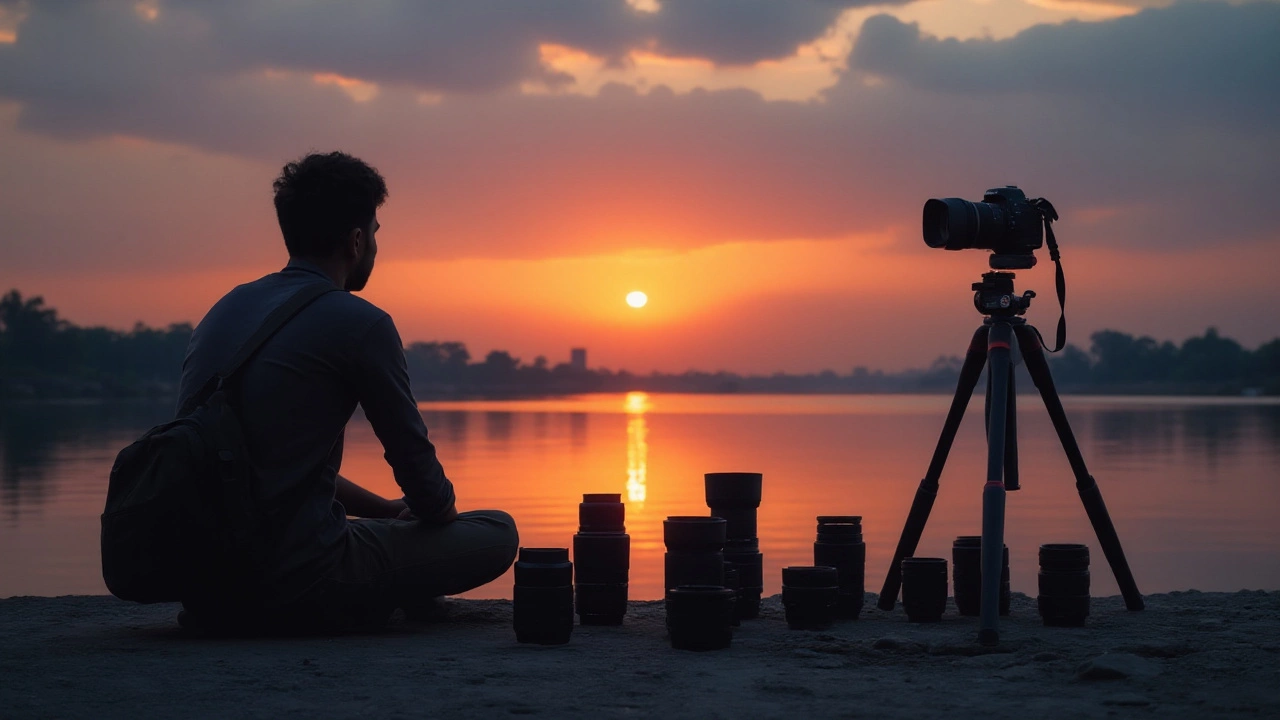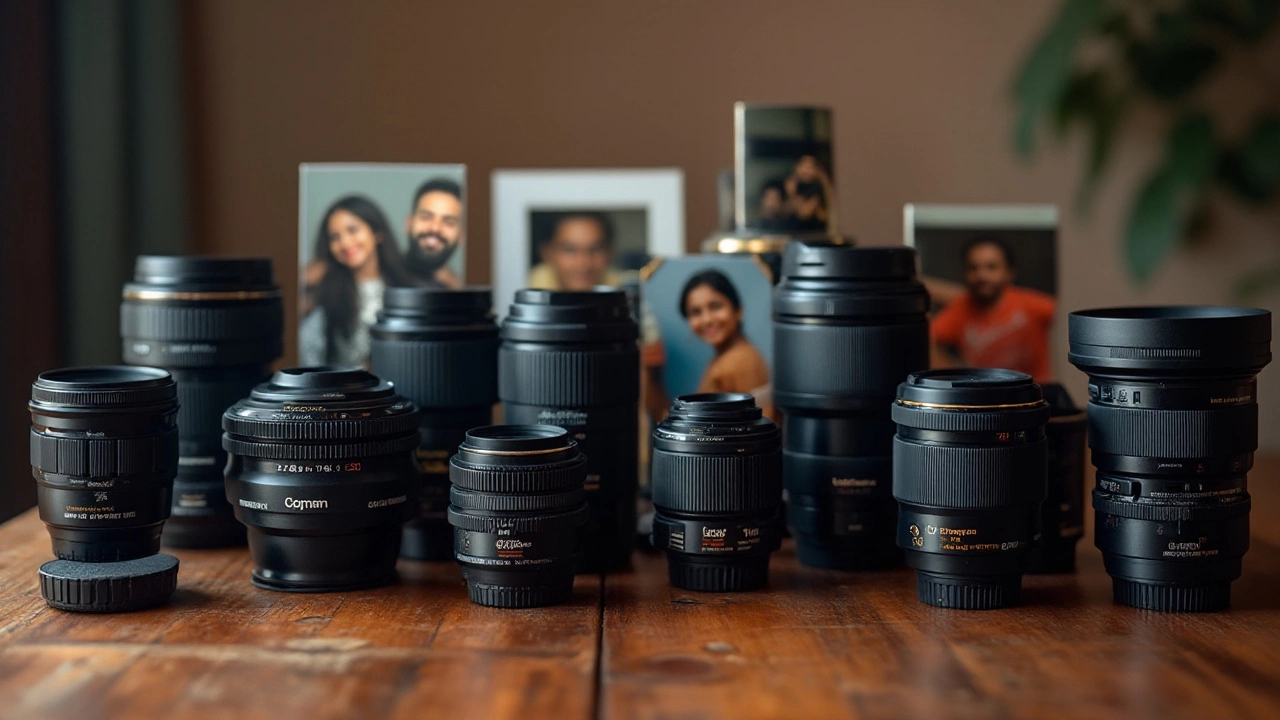Best Cameras in India That Outperform the iPhone
 Dec, 25 2024
Dec, 25 2024
In an era where smartphones like the iPhone have become ubiquitous, it’s easy to overlook the capabilities of dedicated cameras. However, for photography enthusiasts and professionals in India, there are still plenty of reasons to choose a standalone camera over a smartphone, no matter how advanced.
This guide dives into some of the best cameras available right now that leave the iPhone’s camera features trailing behind. We’ll explore what makes these cameras exceptional, from sensor size to lens versatility and the depth of manual controls that can transform your photography. Whether you're stepping into the world of photography or are already acquainted, discovering these options can enhance your visual storytelling.
- Understanding Camera Technology
- Top Cameras Beating the iPhone
- Features to Look For
- Photography Tips and Tricks
Understanding Camera Technology
When it comes to capturing life's vivid moments, understanding the nuances of camera technology is pivotal. Many might argue that smartphones like the iPhone have made photography accessible to the masses, but there’s a realm of possibilities that only dedicated cameras can unlock. One of the primary differences between a smartphone camera and a standalone camera is the sensor size. While the iPhone boasts impressive computational photography, its sensor size is relatively small compared to that found in DSLRs or mirrorless cameras. Larger sensors generally mean better image quality, especially in low-light conditions, leading to richer details and less noise. These sensors allow photographers to experiment with depth of field and achieve that much-desired bokeh effect, which adds an artistic flair to images.
The flexibility of lenses is another area where dedicated cameras shine. Unlike the fixed lenses of smartphones, many cameras offer interchangeable lenses, allowing photographers to choose the perfect lens for each situation, whether it’s a wide-angle lens for landscapes or a telephoto for capturing distant subjects. This flexibility cannot be overemphasized and is a major reason why photographers gravitate towards DSLRs and mirrorless cameras. Additionally, the manual control afforded by these cameras empowers users to control exposure settings like aperture, shutter speed, and ISO, opening up a world of creative opportunities. Manual control is crucial for those who wish to have full control over their shots, capturing images exactly as envisioned.
"Professional photographers feel that a good manual camera is unparalleled for artistic expression," noted renowned photographer Steve McCurry. This sentiment echoes with many artists who appreciate the control and variety offered by modern camera technologies.As much as computational advancements in phones are impressive, there's something authentic that clicks with manual adjustments and lens crafting. Another aspect to consider is the ability of some DSLRs and mirrorless cameras to shoot in RAW format, which retains more data than JPEG, allowing for extensive post-processing. This takes digital editing to a new level, where shadows can be enhanced and highlights can be recovered with ease, bringing new life to images.
Finally, imagine a scenario where you’re shooting action sports or wildlife. Speed is essential. The burst shooting modes and rapid autofocus of many high-end cameras leave most smartphones in the dust. Utilizing phase detection autofocus technology, these cameras quickly lock onto subjects with precision, ensuring that even fast-moving subjects are captured with extraordinary clarity. Such features can be the difference between an ordinary and a stunningly professional image. Understanding all these elements of camera technology is key to unlocking their full potential and realizing why many specialists still prefer them over the convenience of phones.

Top Cameras Beating the iPhone
While the iPhone is renowned for its impressive photography capabilities, certain dedicated cameras in the Indian market surpass it with specialized features and advanced technology. First on the list is the Sony Alpha 7 IV, a mirrorless beast that's adored by many enthusiasts and professionals. This camera boasts a full-frame sensor with 33 megapixels, which means sharper, higher-quality images in all lighting conditions. The dynamic range captured by this sensor ensures that every detail is visible in both the darkest shadows and the brightest highlights. Whether you're shooting in the bustling streets of Delhi or the tranquil landscapes of Kerala, the Alpha 7 IV offers unparalleled versatility. Its ability to shoot 4K video at 60fps also affirms its place in both photography and filmmaking circles.
Another contender is the Canon EOS R6, which has been gaining a loyal fanbase for its intuitive usability and reliable performance. The EOS R6 uses a 20.1-megapixel full-frame sensor and the Digic X processor to deliver stunning image quality with incredible speed. Even in low-light situations, the R6 excels by providing superb clarity and noise control, thanks to its extensive ISO range of 100-102400. Particularly for wildlife and sports photographers, the 20fps continuous shooting mode is a game-changer. Speaking to a well-known wildlife photographer, he mentioned,
"When I'm out in the wild, the Canon EOS R6 helps me capture moments that are gone in the blink of an eye, with details the iPhone simply can't match."
The Nikon Z6 II deserves a mention for being a strong player in the mirrorless section. With a 24.5-megapixel BSI CMOS sensor and dual processors, it seamlessly balances speed and quality, ensuring stunning high-resolution images. The Z6 II is particularly known for its hybrid autofocus system, with 273 autofocus points, locking onto subjects with remarkable precision. This is paired with impressive in-body image stabilization, which allows for sharper images even if you’re shooting handheld. Video creators will appreciate its capability for 4K Ultra HD recording at 30p, while still photographers value its robust low-light performance, something the iPhone camera struggles with in comparison.
A unique option is the Fujifilm X-T4. Though smaller in sensor size due to its APS-C format, the X-T4 offers 26.1 megapixels of resolution and brings a retro charm with tactile dials that many photographers find appealing. Its color science is revered for reproducing lifelike tones that are often reminiscent of classic film. One striking feature is its capability to shoot continuous stills at 15fps, providing photographers the flexibility to capture fast-moving subjects with ease. Another impressive aspect of the X-T4 is its film simulation modes, allowing users to emulate various film types straight out of the camera, enhancing the creative possibilities beyond what the iPhone offers.
Here’s a table highlighting some quick specs of these cameras compared to the iPhone's capabilities:
| Camera Model | Sensor Type | Resolution | Video | ISO Range |
|---|---|---|---|---|
| Sony Alpha 7 IV | Full-frame | 33 MP | 4K at 60fps | 100-51200 |
| Canon EOS R6 | Full-frame | 20.1 MP | 4K at 60fps | 100-102400 |
| Nikon Z6 II | Full-frame | 24.5 MP | 4K at 30p | 100-51200 |
| Fujifilm X-T4 | APS-C | 26.1 MP | 4K at 60p | 160-12800 |
These standalone cameras offer attributes that go well beyond what the iPhone currently brings to the table, particularly in terms of sensor size, lens interchangeability, and depth of field control. For those in India looking to elevate their photography game or pursue professional-grade output, these cameras provide a significant edge over the smartphone in your pocket.

Features to Look For
When you’re on the hunt for a camera that can truly outperform the capabilities of the iPhone, there are several key features to keep an eye out for. One of the most crucial aspects is the sensor size. Large sensors typically capture better quality images, offering improved low-light performance and dynamic range. Cameras like DSLRs and mirrorless models are equipped with APS-C or full-frame sensors, much bigger than those found in phones, enabling them to perform spectacularly in less-than-ideal lighting conditions.
Another significant feature is the lens flexibility. Unlike the fixed lenses on smartphones, cameras with interchangeable lenses allow for greater creativity and adaptation to various shooting conditions. Whether you're aiming for ultra-wide landscapes or up-close macro shots, the ability to switch lenses provides unmatched versatility. It's this flexibility that often makes dedicated cameras a preferred choice for serious photographers who often require specific lenses for different situations.
Manual controls are also worth considering. While phones automate most processes for convenience, dedicated cameras offer you the freedom to manually adjust settings like ISO, shutter speed, and aperture. This level of control is a game-changer, as it allows photographers to tailor settings to the needs of each unique shot. In fact, as Ansel Adams once said,
“You don’t take a photograph, you make it.”This quote underscores the belief that photography is not just about capturing moments but crafting them, something that's difficult to achieve without manual intervention.
Image stabilization, which significantly reduces blurring from camera movement, is particularly important for handheld shooting or when using longer lenses. Cameras with built-in stabilization technology allow for sharper photos even in dynamic environments. Another advantage to consider is the camera’s connectivity, such as Wi-Fi and Bluetooth, which makes it more convenient to transfer images to your devices and share them instantly.
Many modern cameras also feature sophisticated autofocus systems, such as eye-tracking and subject recognition, ensuring your subjects are sharply in focus no matter the scenario. This function is vital for capturing fast-paced action or candid shots at events. Finally, be sure to look at the camera's battery life and durability, as professional-grade cameras often offer extended battery performance and weather sealing to protect against harsh environmental conditions.

Photography Tips and Tricks
Photography is not just about capturing what you see but about expressing what you feel through your lens. To make the most out of the best cameras 2024 in India, it pays to dive deeper into the art. One crucial tip is to understand the 'golden hour', the time shortly after sunrise or before sunset, which offers softer light and magical hues that can drastically enhance your photos. It's often said that good lighting is half the battle in photography, editing becomes a whole lot easier when your initial shot is bathed in perfect natural light.
Another key factor is composition. The rule of thirds is a classic guideline where you divide your image into nine equal segments by two vertical and two horizontal lines, and place the critical elements of your shot along these lines, or at their intersections. This technique creates balance and naturally guides the viewer's eye. Connect this with deliberate focusing—knowing when to blur a background to make the subject pop, or when everything should be in sharp relief can change the mood of your photograph significantly.
Experimentation is also crucial in photography; don't hesitate to test different camera technology settings. Play with ISO, aperture, and shutter speed to see how each alters your photo. Higher ISO settings work well in low-light situations but can introduce grain, while a lower ISO keeps images clean, ideal for well-lit circumstances. Aperture, controlling the depth of field, determines how much of your image is in focus, and shutter speed influences how motion is captured. Remember, each setting tells a different story—let your creativity flow.
“The camera is an instrument that teaches people how to see without a camera.” – Dorothea LangeComposition also benefits from variety, including the use of different lenses if you're using a DSLR or mirrorless camera. Wide-angle lenses allow for more expansive scenes, perfect for landscapes, while telephoto lenses let you get up close to distant subjects. Macro lenses are excellent for capturing the minute details, basic but impressive adjustments. Utilize these to not only capture what's around you but also to try new perspectives and angles—sometimes all it takes is a slight tilt or shifting positions to transform an image.
Post-processing is an important aspect not to be overlooked. While the aim is to get the best possible shot in-camera, software like Adobe Lightroom and Photoshop can help polish your images. Simple adjustments to exposure, contrast, and cropping help emphasize the desired components of an image. Learning how to use layers and masks can elevate your post-processing skills greatly. Remember, a subtle touch often leads to impressive results.
Lastly, always keep an eye out for new trends and techniques in India photography. Attending workshops, following professional photographers on social media, and engaging with online photography communities can inspire and enhance your skills. No matter how advanced the technology becomes, the essence of photography remains the same—understanding light, composition, and your unique perspective is key. Keep pushing your boundaries and watch how your skills transform.